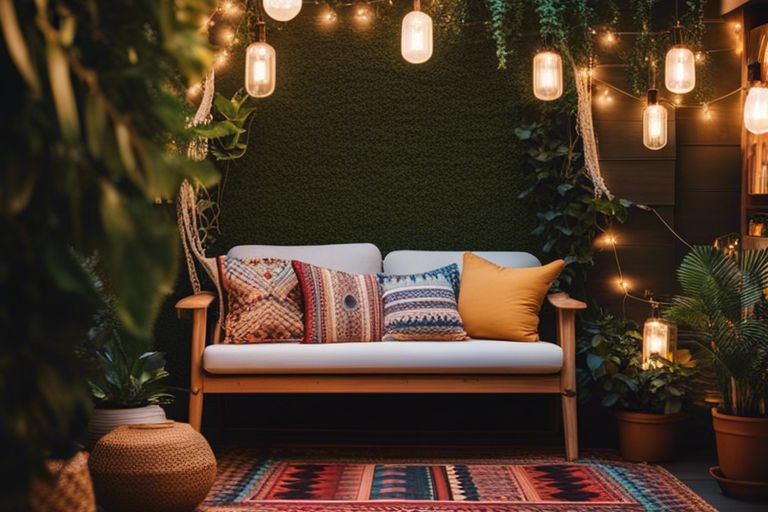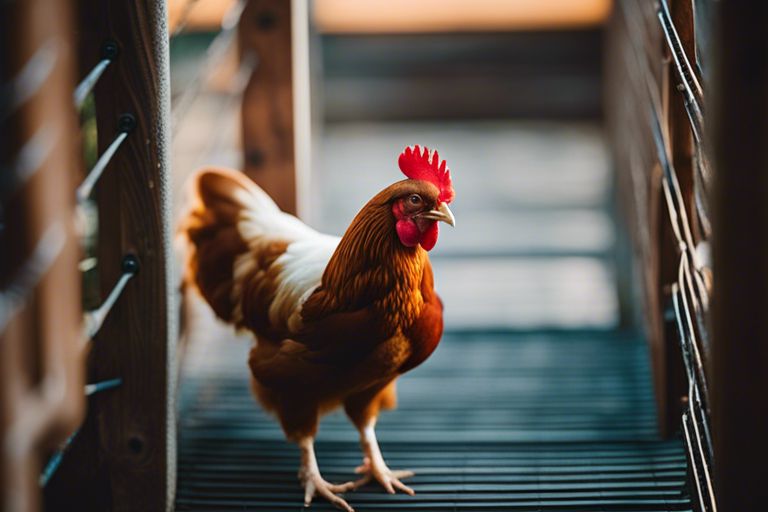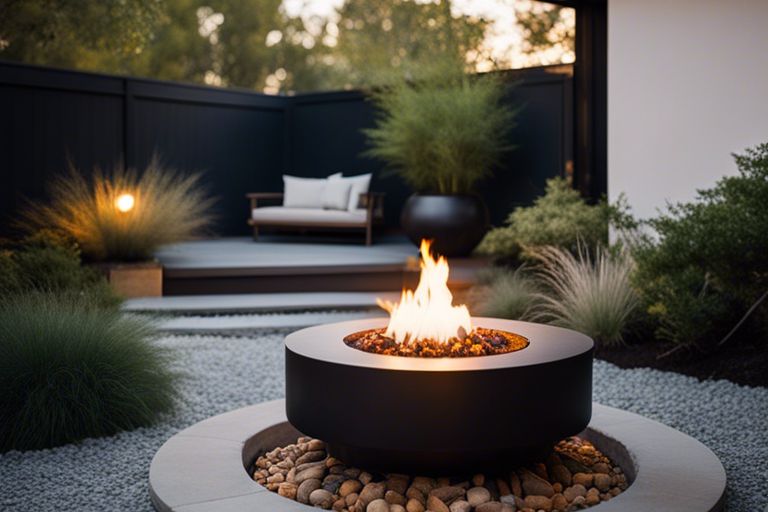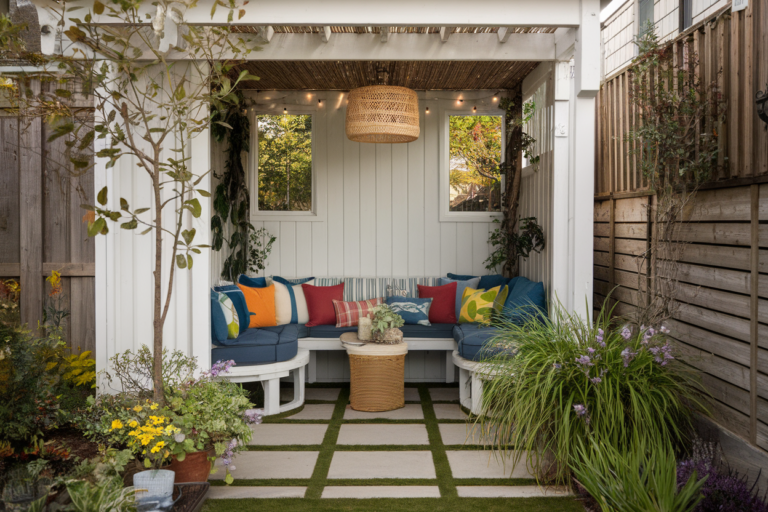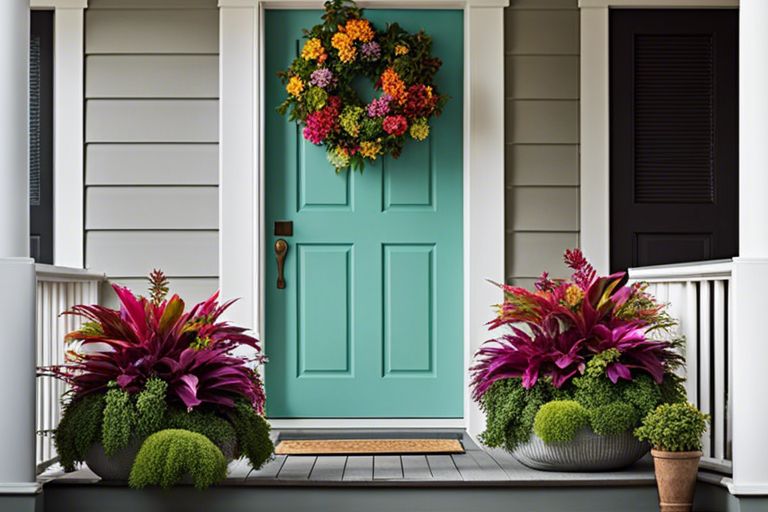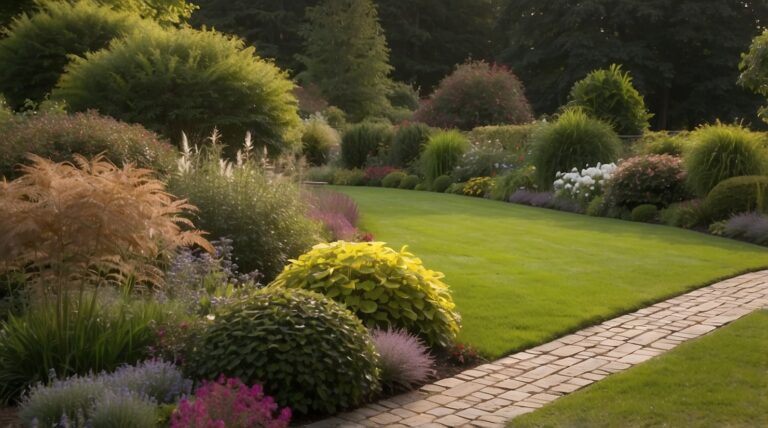49 Best Container Plants Ideas for Your Garden

Looking for the best container plants ideas to liven up your space? Look no further! In this article, we’ve curated a list of 49 stunning container plants that will add beauty and charm to your home or garden.
Whether you’re a seasoned gardener or just starting, these plant ideas are sure to inspire your next gardening project.
Understanding Container Gardening
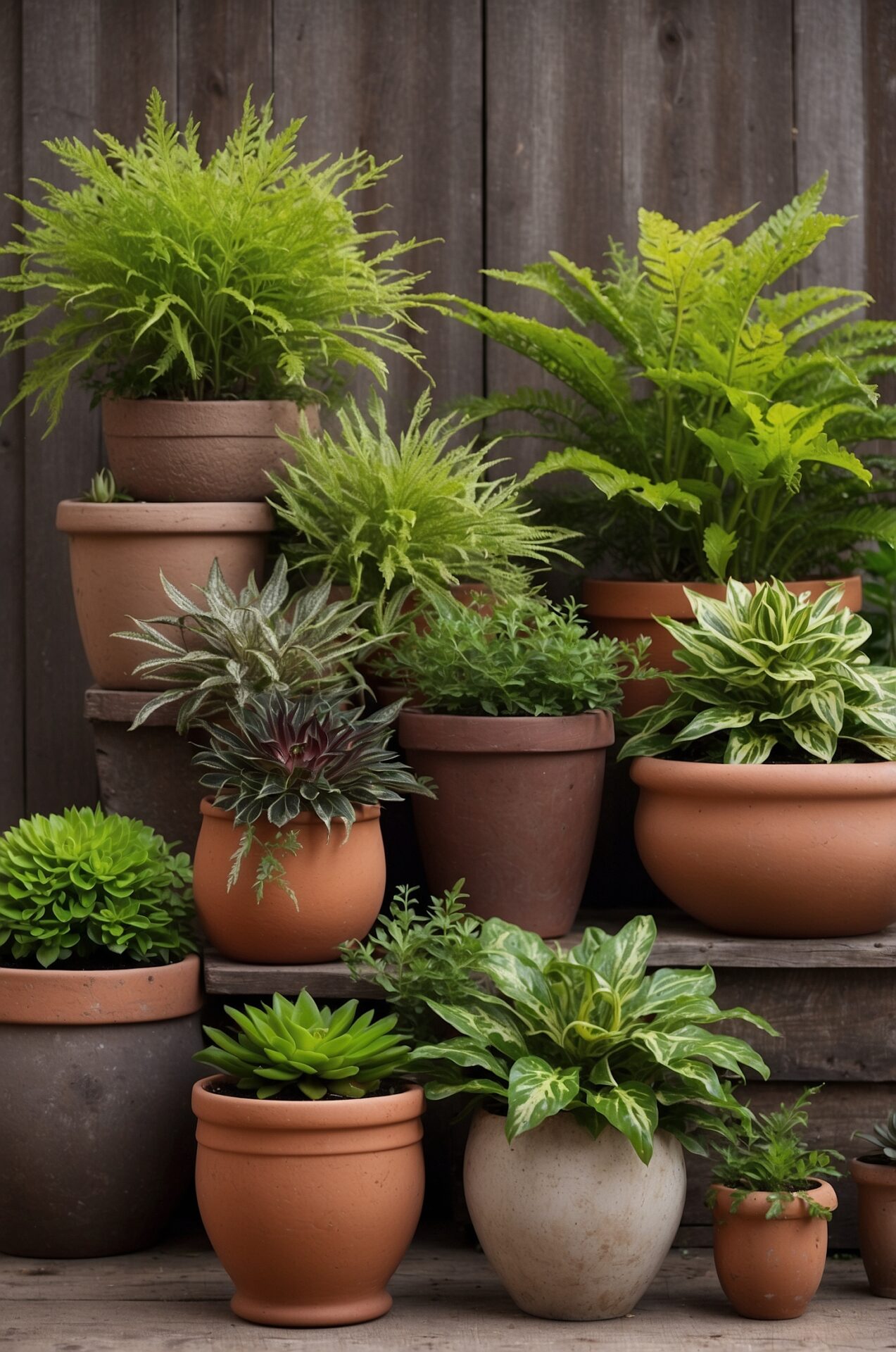
Container gardening is a versatile way to enjoy plants in any space, whether you have a large backyard or a tiny apartment balcony. Here are some key points to consider:
- Choose the Right Container: Select containers with drainage holes to prevent overwatering. Ensure they are large enough for plant roots to grow.
- Select the Appropriate Plants: Not all plants thrive in containers. Choose plants that suit the container size and the amount of sunlight your space receives.
- Use Quality Potting Mix: Opt for a well-draining potting mix to provide essential nutrients for your plants to grow healthy and strong.
- Watering and Maintenance: Container plants may require more frequent watering than plants in the ground. Monitor the soil moisture regularly and adjust your watering schedule accordingly.
- Consider Plant Combinations: Get creative with plant combinations to create visually appealing container gardens. Mix different colors, textures, and heights for an eye-catching display.
- Protect from Harsh Weather: Containers can be more exposed to extreme temperatures. Move sensitive plants indoors during harsh weather conditions to protect them.
- Regular Pruning and Deadheading: To encourage continuous growth and flowering, prune your plants regularly and remove dead flowers.
- Fertilize Appropriately: Container plants may need more frequent fertilization than plants in the ground. Use a balanced fertilizer to promote healthy growth.
By understanding the basics of container gardening, you can create stunning plant displays in any space, from small balconies to expansive gardens. Get creative and experiment with different plants and containers to personalize your green oasis.
Choosing the Right Containers
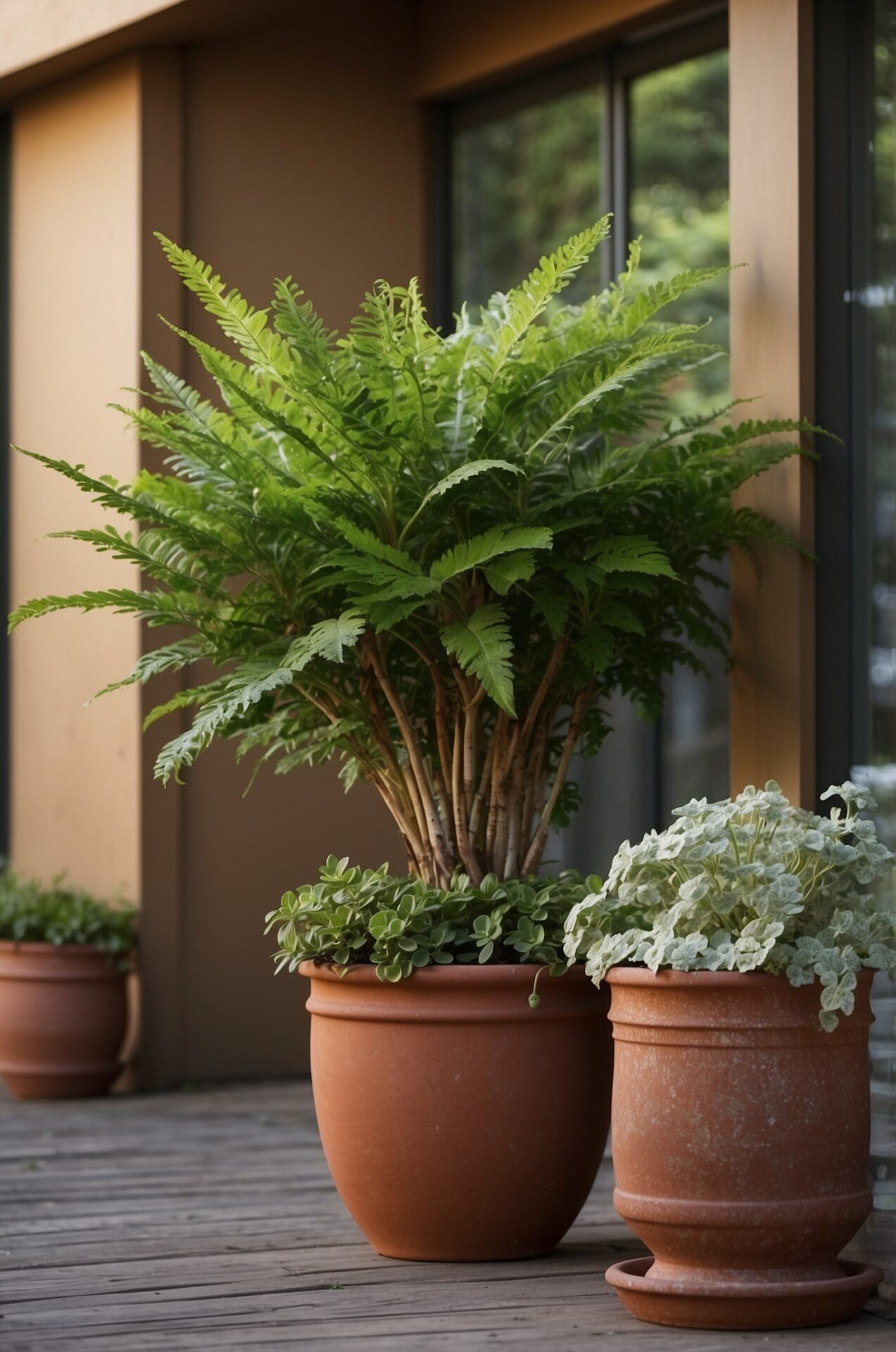
When selecting containers for your plants, consider the following factors:
- Material: Opt for containers made of durable materials like plastic, ceramic, metal, or concrete.
- Size: Choose a container that provides enough room for the plant’s roots to grow. Ensure it has drainage holes to prevent waterlogging.
- Style: Pick a container that complements the plant and fits well with your overall design aesthetic.
- Mobility: If you plan to move your plants frequently, select containers that are lightweight and easy to transport.
- Climate: Consider the material of the container based on your climate. For hot climates, avoid metal containers that can heat up quickly.
Remember, the right container can enhance the beauty of your plants and contribute to their overall health and growth.
Best Soil Mix for Container Plants
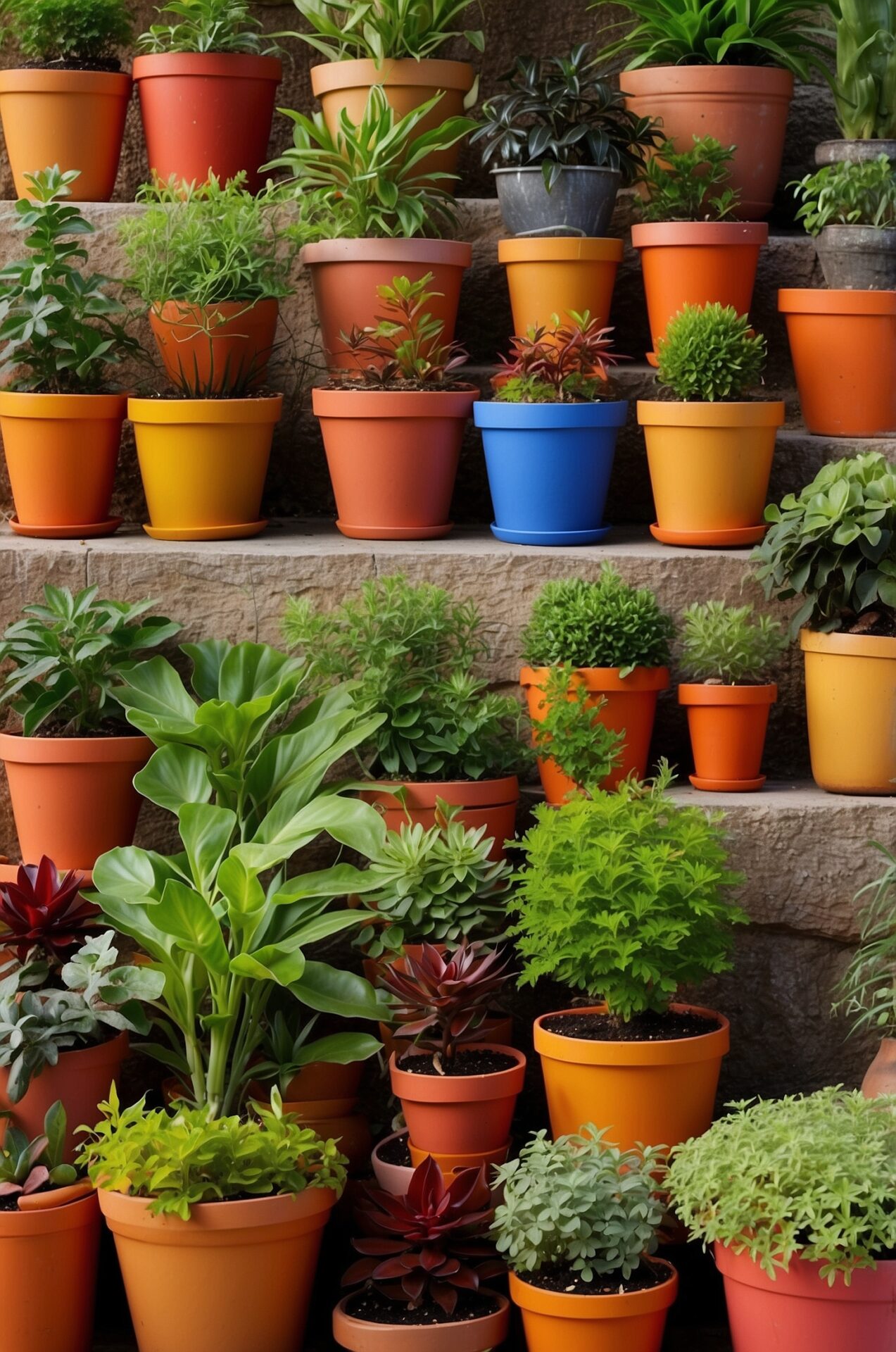
When it comes to choosing the best soil mix for your container plants, it’s essential to provide a well-draining medium that retains moisture without becoming waterlogged. Here are some key components to consider for creating the ideal soil mix:
- Potting Soil: A high-quality potting soil forms the base of your container mix. Look for a lightweight blend specifically formulated for container gardening.
- Perlite or Vermiculite: Adding perlite or vermiculite helps improve soil aeration and drainage, preventing compaction.
- Coconut Coir: Coconut coir is an excellent alternative to peat moss, offering good moisture retention and aeration properties.
- Compost: Incorporating compost into your soil mix provides essential nutrients for your plants and improves soil structure.
- Sand or Grit: Including coarse sand or grit aids in drainage and prevents soil compaction over time.
- Fertilizer: Consider adding a slow-release fertilizer to ensure your container plants receive a steady supply of nutrients throughout the growing season.
Remember to adjust the proportions of these components based on the specific needs of your plants. Different plant species may require varying levels of moisture retention and drainage, so tailor your soil mix accordingly.
By creating a well-balanced soil mix for your container plants, you can provide them with the necessary nutrients and growing conditions to thrive and flourish throughout the season.
Sunlight Requirements for Container Plants

Container plants have varying sunlight needs depending on the type of plant. Here are some general guidelines to help you determine the sunlight requirements for your container plants:
- Full Sun: Plants that require full sun need at least 6 hours of direct sunlight daily. Examples include tomatoes, peppers, and roses.
- Partial Sun: Plants that thrive in partial sun require 3 to 6 hours of sunlight per day. Some examples are herbs like basil, cilantro, and mint.
- Shade: Plants that prefer shade need less than 3 hours of sunlight daily. Examples include ferns, hostas, and impatiens.
It’s crucial to consider the sunlight requirements of your container plants to ensure they grow healthy and produce the desired blooms or fruits. Place your containers in locations that match their sunlight needs to promote optimal growth.
Top 10 Flowering Plants for Containers
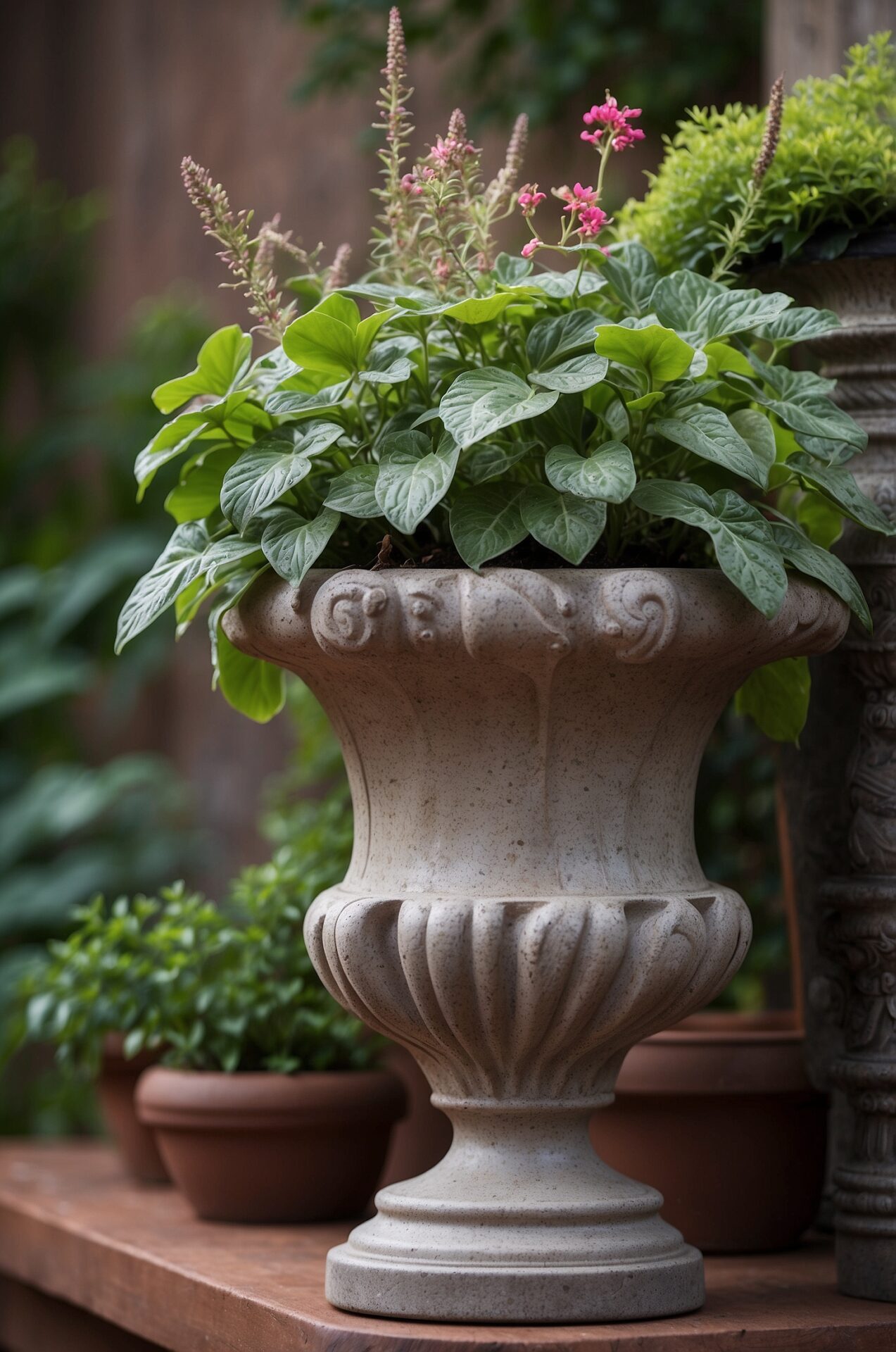
- Geraniums
- Petunias
- Begonias
- Marigolds
- Lantanas
- Impatiens
- Snapdragons
- Dahlias
- Salvias
- Calibrachoas
When it comes to choosing flowering plants for your containers, these top 10 options are not only beautiful but also relatively easy to care for. Geraniums, known for their vibrant blooms, are a popular choice for containers due to their variety of colors. Petunias are another classic option that can thrive in containers with proper care. Begonias offer a range of colors and textures, making them versatile for different container styles.
Marigolds are not only colorful but also known for their ability to repel pests, making them a great addition to any container garden. Lantanas are heat-tolerant and attract butterflies with their vibrant flowers. Impatiens are shade-loving plants that bloom in various shades, adding a pop of color to shady spots in your garden.
Snapdragons are known for their unique shape and bright colors, perfect for adding vertical interest to your container displays. Dahlias offer large, showy blooms that come in a wide range of colors and shapes, adding a touch of elegance to your containers. Salvias are drought-tolerant and attract pollinators with their spikes of colorful flowers.
Finally, Calibrachoas, also known as Million Bells, are prolific bloomers that come in a range of colors, making them an excellent choice for adding cascading color to your container arrangements. Consider mixing and matching these flowering plants to create stunning container displays that will brighten up your outdoor space.
Best Foliage Plants for Container Gardens
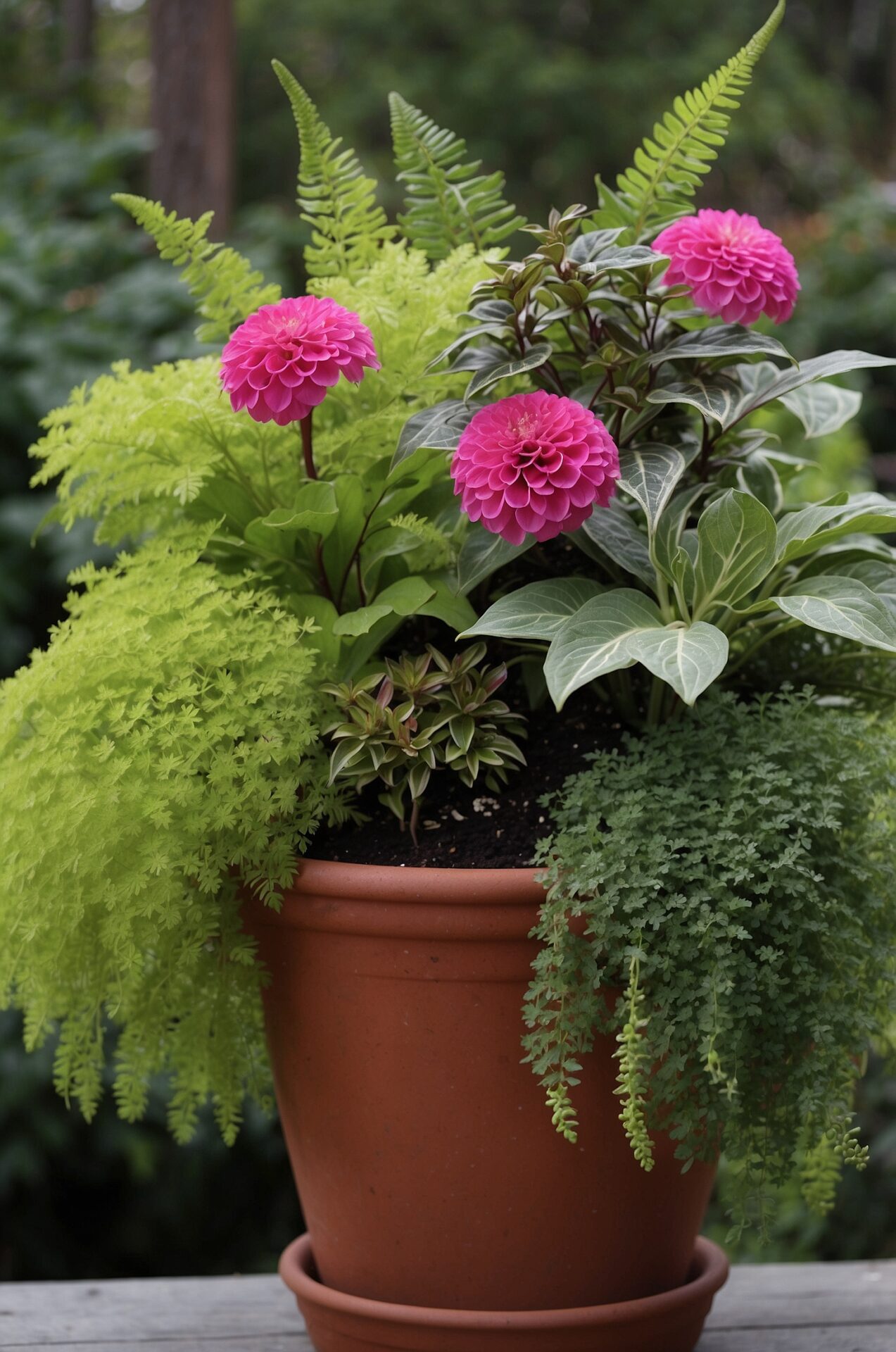
When it comes to creating stunning container gardens, foliage plants play a key role in adding texture, color, and visual interest. Here are some top picks for foliage plants that thrive in containers:
- Coleus: With its vibrant foliage available in a wide range of colors, coleus adds a pop of brightness to any container garden.
- Hostas: Ideal for shady spots, hostas offer lush, green foliage that comes in various shapes and sizes, making them versatile for container arrangements.
- Heuchera: Known for its colorful leaves in shades of purple, silver, green, and more, heuchera is a striking choice for container gardens.
- Ferns: Whether it’s Boston ferns, maidenhair ferns, or Kimberly queen ferns, these plants bring a touch of elegance with their feathery fronds.
- Japanese Forest Grass: This ornamental grass features cascading foliage that adds a graceful, flowing element to container displays.
- Dusty Miller: The silvery-gray foliage of Dusty Miller plants offers a contrasting hue that complements colorful blooms in container arrangements.
- Coral Bells: Also known as Heuchera, coral bells come in a range of colors and variegations, making them a versatile choice for containers.
- Sweet Potato Vine: With its trailing vines and heart-shaped leaves in shades of green, purple, or variegated, sweet potato vine is a popular choice for spilling over the edges of containers.
- Snake Plant: Ideal for beginners, snake plants are low-maintenance with striking upright leaves in various patterns, adding a modern touch to container gardens.
- Ornamental Grasses: Whether it’s fountain grass, zebra grass, or blue oat grass, ornamental grasses offer texture and movement to container compositions.
These foliage plants not only provide visual interest but also serve as a great backdrop for flowering plants, creating dynamic and eye-catching container gardens.
Edible Container Plants: Herbs and Veggies
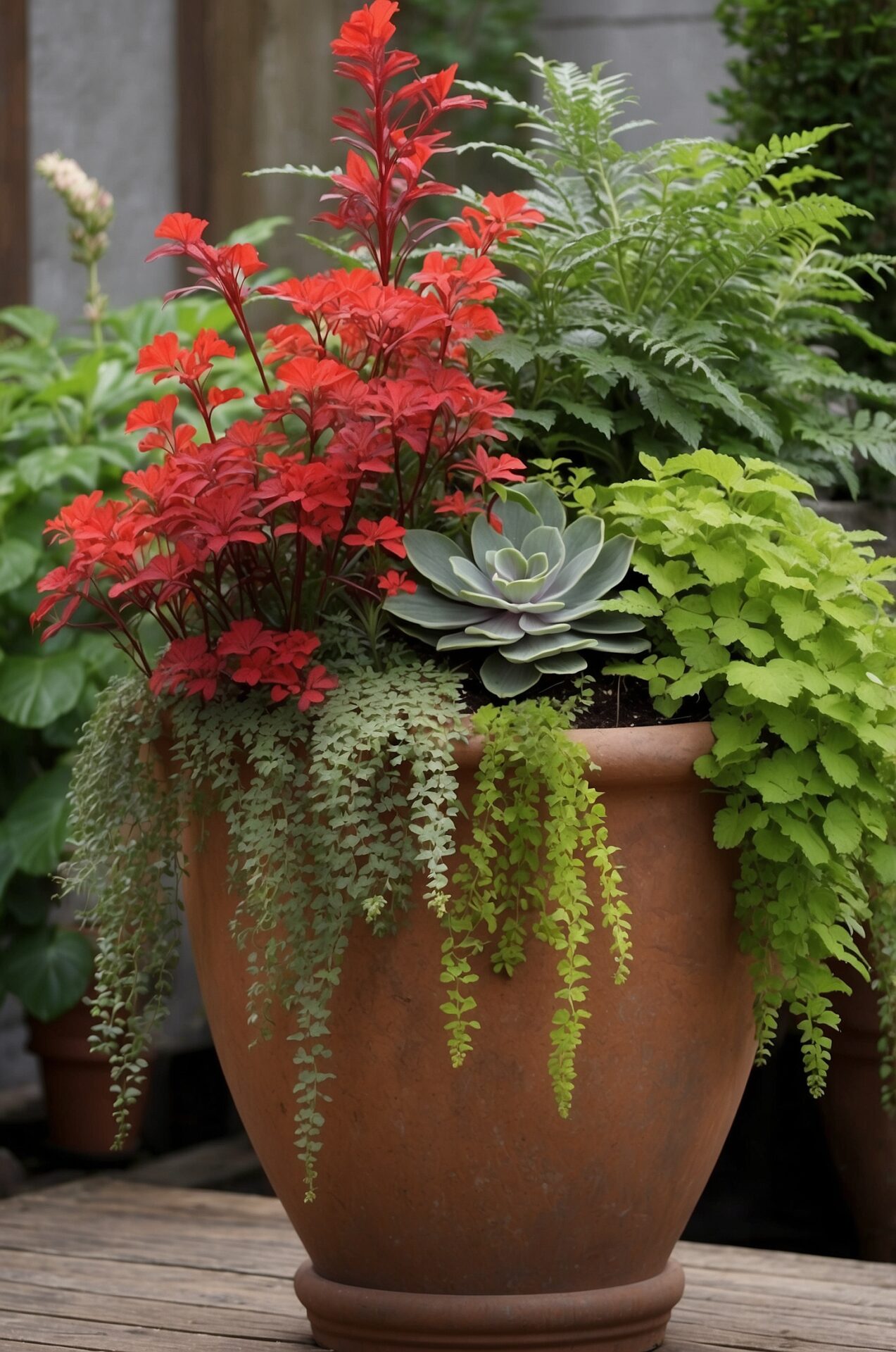
When it comes to container gardening, herbs and veggies are a popular choice for many gardeners. Not only do they add flavor to your dishes, but they also look beautiful and are relatively easy to care for.
Herbs
- Basil: Perfect for pasta dishes and pesto.
- Mint: Great for teas, cocktails, and desserts.
- Rosemary: Ideal for seasoning meats and roasted vegetables.
- Thyme: Adds a savory touch to soups and stews.
- Parsley: A versatile herb for garnishing and cooking.
Veggies
- Tomatoes: Choose cherry tomatoes for smaller containers.
- Peppers: Bell peppers or chili peppers thrive in containers.
- Lettuce: Perfect for small spaces and quick salads.
- Cucumbers: Provide support for climbing varieties.
- Carrots: Opt for shorter varieties in deep containers.
With the right soil, sunlight, and watering schedule, you can enjoy a bountiful harvest of fresh herbs and veggies right from your own patio or balcony. Experiment with different combinations and see which herbs and veggies thrive best in your climate. Happy planting!
8. Seasonal Container Planting Ideas
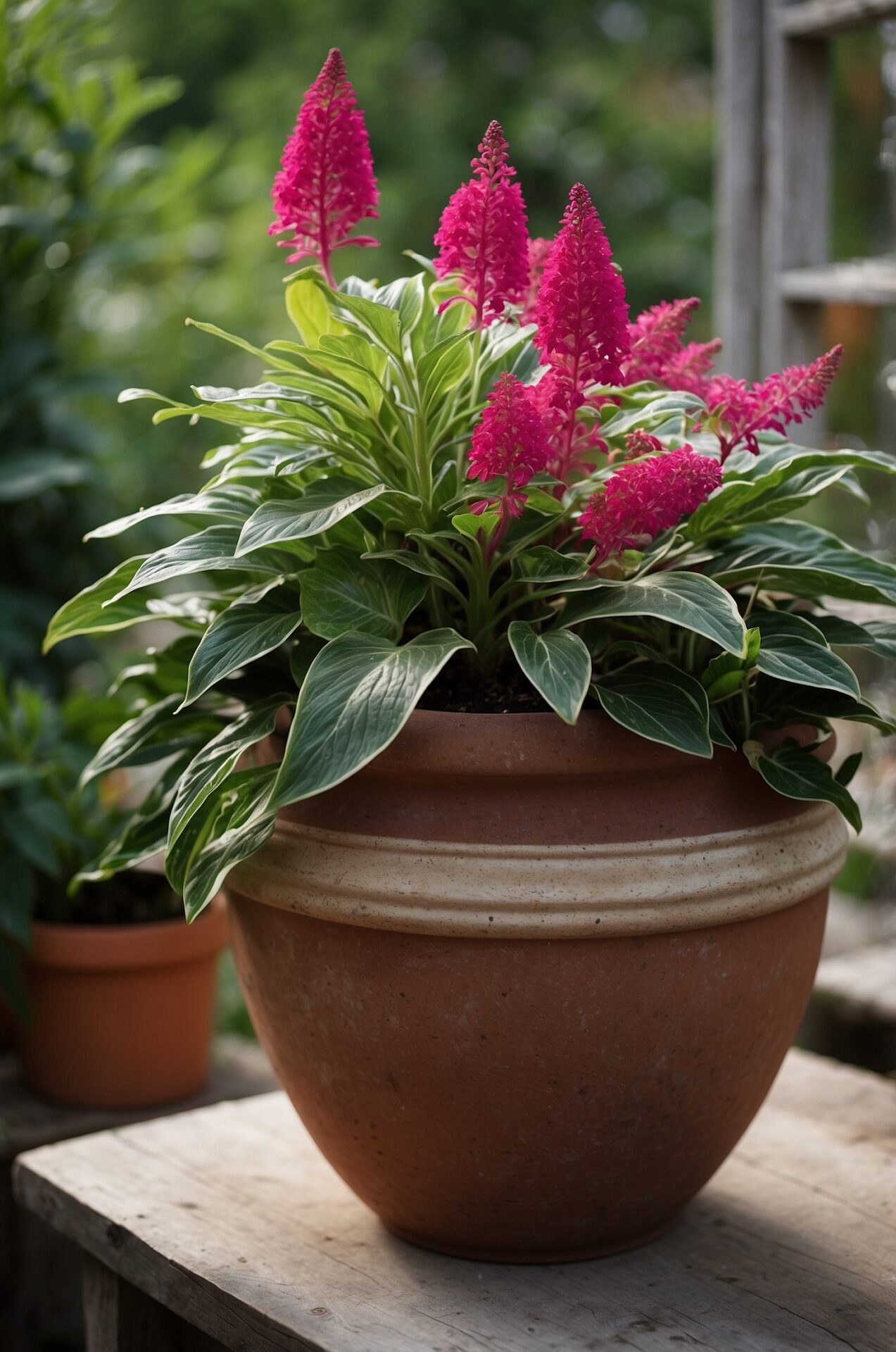
When it comes to seasonal container planting, the possibilities are endless. Here are some creative ideas to add seasonal flair to your outdoor space:
- Spring: Embrace the vibrant colors of spring by planting tulips, daffodils, and hyacinths in your containers. Pair them with pansies or violas for a delightful pop of color.
- Summer: Create a tropical paradise with plants like hibiscus, cannas, and mandevillas. Mix in some trailing vines like sweet potato vine or ivy for a lush look.
- Fall: Celebrate the autumn season with mums, asters, and ornamental kale in rich hues of red, orange, and yellow. Add some ornamental grasses for texture.
- Winter: For a festive touch during the winter months, consider planting evergreens like spruce, pine, and cedar. Add in some winter-blooming flowers like pansies or cyclamen for a cheerful display.
Remember to consider the light and temperature requirements of the plants you choose to ensure they thrive throughout the season. With a little creativity and planning, you can enjoy beautiful container gardens that change with the seasons.
9. Creative Container Arrangements
When it comes to creating visually appealing container plant arrangements, the key is to think outside the box. Here are some creative ideas to inspire your next gardening project:
- Mix and Match: Combine different plant sizes, colors, and textures in one container to create a dynamic and eye-catching display.
- Vertical Gardens: Use tall, cascading plants at the back of the container, medium-sized plants in the middle, and low-growing plants at the front to add depth and dimension.
- Thriller, Filler, Spiller: Follow this classic formula by including a “thriller” plant as the focal point, “filler” plants to add volume, and “spiller” plants to cascade over the edges.
- Color Coordination: Create a cohesive look by sticking to a color scheme or mixing complementary colors for a harmonious arrangement.
- Edible Containers: Plant herbs, vegetables, or fruits in containers for both a functional and visually appealing garden.
- Succulent Gardens: Combine different types of succulents in one container for a low-maintenance and modern look.
- Fairy Gardens: Create a miniature garden with tiny plants, figurines, and accessories to add a whimsical touch to your space.
- Repurposed Containers: Upcycle old teapots, wheelbarrows, or even rain boots as unique plant containers to add character to your garden.
- Seasonal Themes: Change up your container arrangements with the seasons by incorporating seasonal flowers or decor elements to keep your garden fresh and exciting all year round.
Get creative with your container plant arrangements and let your imagination run wild to create a unique and personalized outdoor oasis.
Vertical Gardening with Containers
Vertical gardening with containers is a fantastic way to maximize your space and add a touch of green to any wall or balcony. Here are some tips to get you started:
- Choose the Right Containers: Opt for lightweight containers that can be easily mounted on walls or hung from railings.
- Select the Right Plants: Look for plants that thrive in vertical environments, such as trailing vines, ferns, and succulents.
- Consider Sunlight: Make sure your vertical garden gets enough sunlight based on the plant’s requirements.
- Use a Sturdy Support: Ensure your vertical garden structure is securely attached to the wall or railing to prevent accidents.
- Watering: Vertical gardens tend to dry out faster, so be sure to water them regularly to keep your plants healthy.
- Fertilize Regularly: Since container plants have limited soil nutrients, regular fertilization is key to ensure healthy growth.
- Maintenance: Regularly check for pests, prune dead leaves, and rotate your plants for even growth.
Whether you have a small balcony or a large backyard, vertical gardening with containers can transform any space into a lush oasis. Get creative with your plant selection and placement to create a stunning vertical garden that will be the envy of all your neighbors.
Caring for Container Plants
When it comes to caring for your container plants, there are a few key things to keep in mind to ensure they thrive:
- Watering: Container plants can dry out quickly, so it’s essential to water them regularly. Check the soil moisture level with your finger – if it feels dry, it’s time to water.
- Light: Most container plants need plenty of sunlight to grow well. Make sure to place your containers in an area where they can receive adequate sunlight each day.
- Fertilizing: Container plants rely on you for their nutrients since they can’t access the ground. Use a balanced fertilizer to feed your plants throughout the growing season.
- Pruning: Regular pruning helps keep your container plants healthy and encourages new growth. Remove any dead or yellowing leaves and spent flowers to promote plant vitality.
- Pest Control: Keep an eye out for common pests like aphids, spider mites, and mealybugs. If you notice any infestations, treat your plants promptly with an appropriate insecticide.
- Winter Care: In colder climates, protect your container plants from freezing temperatures by moving them indoors or insulating the pots with materials like burlap or bubble wrap.
By following these care tips, you can enjoy vibrant and healthy container plants throughout the year.
Common Pests and Diseases in Container Gardens
Container plants are susceptible to various pests and diseases that can hinder their growth and health. Being aware of these common issues can help you identify and address them promptly. Here are some of the most prevalent pests and diseases you may encounter in your container garden:
- Aphids: These tiny insects feed on plant sap and can cause wilting and yellowing of leaves.
- Spider Mites: These pests are common in dry conditions and can cause stippling and webbing on plants.
- Fungal Diseases: Diseases like powdery mildew and botrytis can develop in humid conditions and affect plant foliage.
- Root Rot: Overwatering can lead to root rot, causing plants to wilt and decline.
- Whiteflies: These insects feed on plant sap and excrete honeydew, leading to sooty mold growth.
To prevent and manage these issues, consider these tips:
- Monitor Your Plants: Regularly inspect your container plants for any signs of pests or diseases.
- Maintain Good Air Circulation: Proper air circulation can help prevent fungal diseases from developing.
- Water Wisely: Avoid overwatering your plants to prevent root rot and fungal issues.
- Remove Infected Plants: If a plant is severely affected, remove it from your container garden to prevent the spread of diseases.
By staying vigilant and taking proactive measures, you can help protect your container plants from common pests and diseases, ensuring they thrive and flourish in your garden.
Conclusion
In conclusion, these 49 container plants ideas offer a wide range of options for adding greenery and vibrancy to your space. Whether you have a small balcony or a spacious garden, there is a plant that will suit your needs. From colorful flowers to lush foliage, these container plants provide endless possibilities for creating beautiful and inviting outdoor areas. Experiment with different combinations, textures, and sizes to personalize your plant arrangements and bring life to any corner of your home. With a little creativity and care, you can transform your outdoor space into a thriving oasis that reflects your unique style and personality.

